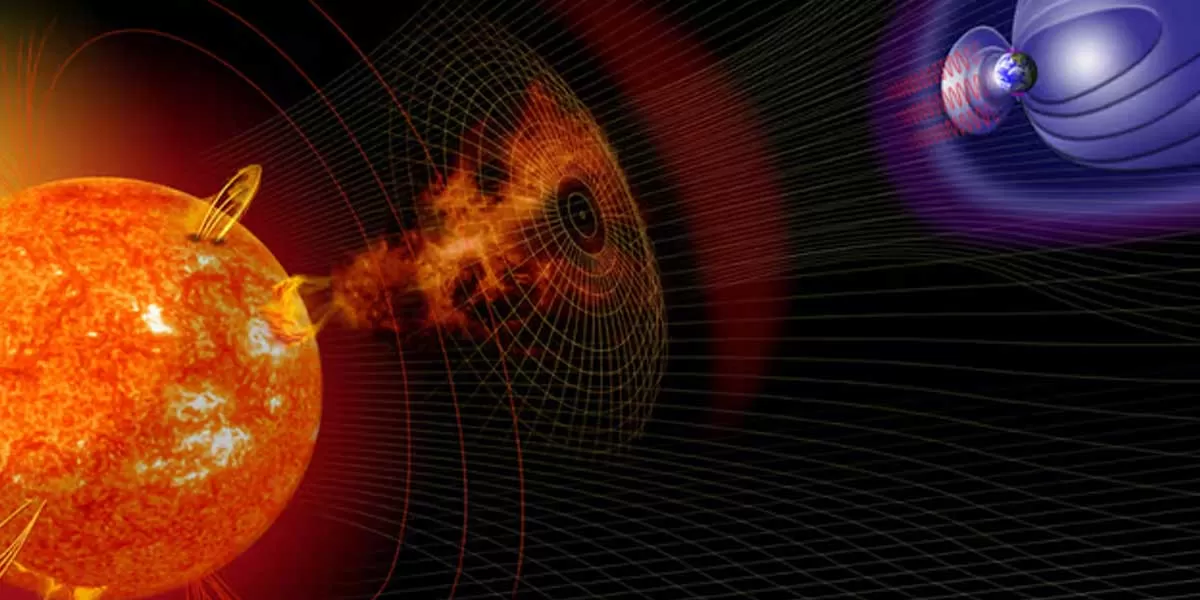The global scientific community is abuzz with the news of an impending severe geomagnetic storm predicted to hit Earth late Friday night, on May 10. A series of solar flares and coronal mass ejections (CMEs) that began on May 8 are expected to trigger northern auroras and possibly disrupt satellite communications, electric power grid, and even trigger GPS problems.
Astronomers around the world pointed their telescopes at the sun on Friday, marveling at the abnormally large sunspots ever seen on the surface of the local star. The unusual solar activity gave rise to many theories and speculations regarding the impact of the colossal charged mass on Earth.
The Space Weather Prediction Center (SWPC), of the US? National Oceanic and Atmospheric Administration (NOAA), said it is closely monitoring the solar flares and coronal mass ejections. The forecasters issued a Severe (G4) Geomagnetic Storm Watch for the evening of Friday, May 10, a first such warning since 2005.
The flares were generated by a cluster of sunspots ? nearly 200,000 kilometers wide ? big enough to be seen with the naked eye from Earth. The size of the sunspot is being compared to the Carrington event of 1859, which gave rise to the most severe geomagnetic storm ever recorded on Earth.
The coronal mass ejection involved the production of numerous M-class solar flares and two X-class solar flares expected to arrive on Earth between late May 10 and early May 11, 2024.
The bursts of plasma and magnetic fields spewing out of the sun?s giant corona can cause geomagnetic storms upon hitting Earth?s atmosphere. According to NOAA, these storms can impact infrastructure in near-Earth orbit and on Earth?s surface, potentially disrupting communications, the electric power grid, navigation, radio, and satellite operations.
Reportedly, the operators of these systems have been notified so they can take protective action.
The incoming bursts of solar mass are expected to unleash a magnetic storm that will overwhelm Earth?s magnetic field. The impact is likely going to be also felt by the vast network of undersea optic fiber cables that form the backbone of the internet. Experts say this could lead to massive internet outages across the world, possibly an ?internet apocalypse.?
The colorful auroras, witnessed in the upper atmosphere in some countries, are triggered by such geomagnetic storms. The current train of powerful solar flares is expected to create such auroras as to be seen as far south as Alabama and Northern California.
The scientists say the incoming solar storm will impact the infrastructure in Earth?s near orbit, consisting of satellites. In case of severe flares, the satellites could be dislodged from the orbits or bump into each other and lose communication with Earth. The impact of the plasma bursts could damage the electronic components of the satellites in the upper orbits.
Called the Carrington event, the solar storm hitting Earth in 1859 was the most severe geostorm that wreaked havoc with the telegraph systems. The auroras activated by the powertrain of plasma discharge were seen as far as the tropics, according to NASA.
According to History.com, there were reports of sparks showering from telegraph machines, operators receiving electric shocks, and papers set ablaze by the rogue sparks. The skies were blindingly bright, with some people bewildered by the brilliant spectacle of light overwhelming the skies. For many, it seemed to be the end of the world, the report adds.
However, a geostorm of that magnitude will wreak havoc with human life today, where everything is run by electronics. ?The global economy today comprises numerous sectors that can be affected. From space-based telecommunications, broadcasting, terrestrial weather services, Global Navigation Satellite Systems (GNSS) navigation, through to electric power distribution and High-Frequency (HF) radio communications, especially at high latitudes?, says the European Space Agency?s Weather Service Network.
While the timing of these events remains fairly certain, the magnitude of their effects on our planet?s geomagnetic field is still a subject of speculation, says Earth.com. The website claims ?it is crucial to remain vigilant and prepared for any challenges that may arise from this cosmic dance between the Sun and Earth.?




















